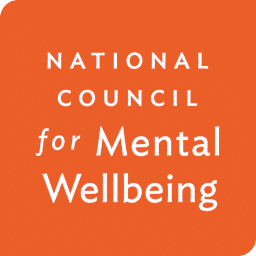What are Stimulant Drugs?
Stimulants are a class of drugs that increase signals in the brain. A stimulant can increase confidence, energy, and calmness. Large doses of a stimulant can lead to anxiety, panic attacks, seizures, and headaches. Using stimulants for longer periods can have negative health consequences.
While caffeine is a relatively safe stimulant, other stimulants used by students, athletes, and recreational users can pose a significant health threat.
Prescription Stimulants
Prescription stimulants are medications generally used to treat attention-deficit hyperactivity disorder and narcolepsy—uncontrollable episodes of deep sleep. A prescription stimulant increase energy, alertness, and attention. Prescription stimulants work by enhancing the effects of dopamine and norepinephrine and can lead to increased respiratory function, blood pressure, and euphoria.
Drugs like amphetamine have become one of the most commonly used prescription stimulants. They can also be considered illicit drugs, if taken inappropriately. These medications include Ritalin, Adderall, and Concerta.
Prescription stimulants can be used for treating a person who has ADHD or has difficulties controlling impulses. The CDC reports 11 percent of adolescents between 18-29 had ADHD diagnosed by 2010. While prescribed stimulant medications may be helpful to those with ADHD, they are often used by college students with no condition in order to improve focus and cognitive function.
What are Stimulant Drugs?
The short-term effects of stimulants include:
increased blood pressure and heart rate
increased breathing
decreased blood flow
increased blood sugar
opened-up breathing passages
After the euphoria wears off, people experience exhaustion, depression, and apathy—the “down” that follows the “up.” It is this immediate and lasting exhaustion that quickly leads the stimulant user to want the drug again.
Long Term Effects of Stimulants
Using stimulants for a long period can cause psychological, behavioral, and physical changes. When someone uses stimulants for a long period of time a strong tolerance can be developed. This tolerance can create withdrawal symptoms when stopping the use of stimulants. At times, long term effects and withdrawal can result is serious conditions such as medical, psychiatric, neurological.
When stimulant withdrawal usually occurs, it begins within 24 hours of the last use. The symptoms of withdrawal last one to three days. These symptoms include:
Severe fatigue and sleepiness
Depressed mood, at times accompanied by suicidal thoughts, and
Occasionally an increased appetite
Low energy
Low motivation
Anxiety
Depressed mood
Difficulty with concentration
And sensitivity to touch
Drug craving and disturbed sleep can remain for an extended period. Although withdrawal from stimulants can be uncomfortable, it is rarely dangerous. The exception is the few that become suicidal. Suicidality is something to be aware of and should be assessed the clinical and medical staff.
Types of Stimulants
Caffeine
The most commonly used stimulant is caffeine. Caffeine’s mechanism of action differs from many stimulants, as it produces stimulant effects by inhibiting adenosine receptors.
Nicotine
Nicotine is a naturally produced alkaloid in the nightshade family of plants (most predominantly in tobacco and Duboisia hopwoodii) and is widely used recreationally as a stimulant and anxiolytic. As a pharmaceutical drug, it is used for smoking cessation to relieve withdrawal symptoms.
Among teens and young adults, vaping nicotine has become an increasing problem. According to the Centers for Disease Control and Prevention, in the United States in 2019, more than 5.4 million youth used e-cigarettes.
Methamphetamine
Methamphetamine is an addictive stimulant, commonly known as “meth.” Usually in powder or crystal forms, it is widely used by either smoking or injecting into the veins intravenously. It is regarded as a recreational drug because there are initial euphoric effects associated with it. After that excitement, emotions can get worse and anger and fear are common during a crash.
Cocaine
Cocaine is one of the most frequently used illegal drug in the United States. No matter how cocaine is administered– injected, snorted, inhaled, or taken orally–it is rapidly absorbed. The most common form of ingestion for powdered cocaine is snorting the drug. After cocaine quickly reaches the brain, it is absorbed and makes its way throughout the other tissues in the body.
Cocaine generally comes as a white powder, although most commonly known as “crack” is produced by crystallizing rock. The average age for first time use is unfortunately getting younger and younger.
Signs of cocaine use include but are not limited to: excitability, weight loss, dilated pupils, runny nose, or nosebleeds.
What are Stimulants Prescribed for?
Prescription stimulants are used to treat some psychological and physical disorders, including narcolepsy and attention-deficit hyperactivity disorder (ADHD). The most common prescription stimulants include Adderall (dextroamphetamine-amphetamine), Ritalin (methylphenidate) and Dexedrine (dextroamphetamine).
Attention Deficit Hyperactivity Disorder (ADHD)
For someone with ADHD, stimulant use boosts the levels of certain brain chemicals, like dopamine and norepinephrine. There are many stimulants available to treat ADHD: short-acting, intermediate-acting, and long-acting forms.
The short-acting forms of the drug are usually taken two or three times a day, and the long-acting ones just once a day. The benefit of a short-acting drug is that you have more control over when you have medication in your system.
Stimulant Drug Abuse and Addiction
Doctors use the American Psychiatric Association’s most recent criteria for substance use disorders to identify stimulant addiction. To be considered addicted to stimulants, individuals must meet at least two of 11 criteria, which include an inability to reduce consumption, cravings to use a stimulant, continuing to use a stimulant despite it causing relationship problems, and needing to use increased amounts of a stimulate to achieve the desired effect.
Long-term stimulant use, even when prescribed by a doctor, can cause a person to develop a tolerance, which means that they need higher doses or more frequent doses of the drug to get the desired effects. This is often when substance abuse or stimulant addiction begins.
Prescription stimulant misuse can lead to a substance use disorder, which takes the form of an addiction in severe cases, even when used as prescribed by a doctor. This is especially true if the person taking them has a history of substance abuse and addiction.
How do People Use and Misuse Prescription Stimulants?
Generally, prescribed stimulants are taken as pills, capsules or in liquid form. Misuse of prescription stimulants can lead to taking the medication for a reason other than why it was originally prescribed. Alternates include crushing or open tablets, dissolved powders in water, and injecting liquid in veins. Some may cough and smoke.
What are the Health Effects of Stimulant Use Disorder?
Stimulants stimulate the brain’s production of certain neurotransmitters, such as dopamine, causing increased alertness and feelings of happiness. If stimulants are used long-term more of the drug is needed to achieve the same “high” as previously. As with some other illegal drugs, stimulant use can increase a person’s risk of suicide.
Stimulant use can result in abnormal heartbeat and seizures, and sometimes death. Users who take a stimulant often, may experience anxiety, sleepiness, or snoring. Cocaine and methamphetamines are extremely addictive and withdrawal symptoms can include high cravings for drugs, mood changes, insomnia, hallucinations, and headache.
Stimulants Use can Result in an Addiction
Taking Stimulants with Other Drugs
The effects can be dangerous and unpredictable to take stimulants with other drugs, including over-the-counter prescription medication.
Amphetamines and Some Antidepressants
Crystal Methamphetamine (Ice) and Alcohol, Cannabis or Benzodiazepines
Taking ice and alcohol or ice with cannabis or benzos can cause a tremendous strain on the body, and more likely lead to an overdose. the effects of depressant drugs like benzodiazepines may be masked by the effects of stimulants. This can increase the risk of overdose.
Crystal Methamphetamine (Ice), Speed or Another Illegal Drug
Taking ice, ecstasy or other illegal drugs together can cause an enormous strain on all parts of the body including the heart, which can lead to stroke.
Amphetamines and Alcohol, Cannabis or Benzodiazepines
When these drugs are taken together the body experiences conflicting effects of each drug which places it under a lot of stress, which can lead to an overdose.
Addiction Treatment at Careplus New Jersey
CarePlus NJ is dedicated to a strength-based, person-centered approach to care and treatment. Our intensive outpatient and outpatient drug treatment programs integrate evidence-based clinical practices, and behavioral therapies such as harm-reduction and motivational interviewing, with peer support and wraparound services designed for wellness and recovery.
Our specialized treatment programs provide seamless access to services designed to support wellness and recovery in all aspects of life. Upon evaluation, individuals and families are engaged in treatment planning to determine the most appropriate level of care, ranging from early intervention to outpatient withdrawal management. Treatment program support and follow-up care continues as needed.
If you or someone you know is suffering from alcohol or drug addiction or drug abuse, please contact one of our team members at 201-265-8200 for more information on our drug addiction treatment behavioral therapies.

Methamphetamine
Methamphetamine is a synthetic drug similar to amphetamine but with more rapid and lasting effects, Meth is used a prescription drug used to treat narcolepsy and to maintain blood pressure. It can illegally be used as a stimulant.

Cocaine
Cocaine is a stimulant that primarily comes from the leaves of two coca species that are native to South America. It is most commonly used as a recreational drug due to the euphoric feelings one has when intoxicated.

Ritalin
Ritalin is a prescription stimulant that is prescribed to treat ADHD. It works by changing the amounts of certain natural chemicals in the brain.

Adderall
Adderall is a combination drug that consists of dextroamphetamine and amphetamine which are two central nervous stimulants that reduce impulsivity and help focus by increasing norepinephrine and dopamine levels in the brain.







